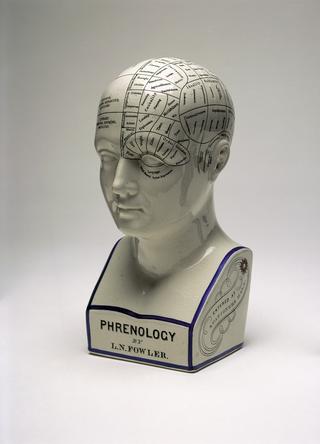






















Bird cage, from ward at Sussex Lunatic Asylum/Brighton County Borough Asylum, 1872. Vintage label reads: 'PARROT CAGE / Major Meek presented the female / patients with four fine parrots.'
Asylums could be dreary places. In the early 1900s, the optimism of moral therapy began to fade as the great Victorian asylums gradually filled beyond their capacity with hundreds and thousands of patients considered beyond hope of recovery. Their majestic architecture and large, sunlit day-rooms, originally considered therapeutic, became increasingly desolate and isolating. In an attempt to brighten them up a little, caged parrots and birds were added. Photographs taken of asylums in this period show that many of them had bird cages. This is one of the few that have survived in museum collections.
Why might birds have been kept at the Sussex Lunatic Asylum? This cage held three parakeets, which would have provided a little bit of colour and song in patients' otherwise dull days. It is likely that the birds' care and feeding would have been entrusted to one of the asylum’s long-term patients, and such a responsibility may have helped a patient feel significant. Do you think the bird’s keeper saw something of himself or herself in the predicament of the caged bird?
Details
- Category:
- Psychology, Psychiatry & Anthropometry
- Object Number:
- 1996-271/31
- Measurements:
-
overall: 885 mm x 566 mm x 630 mm, 10.98 kg
- type:
- bird cage
- credit:
- Princess Royal Hospital




